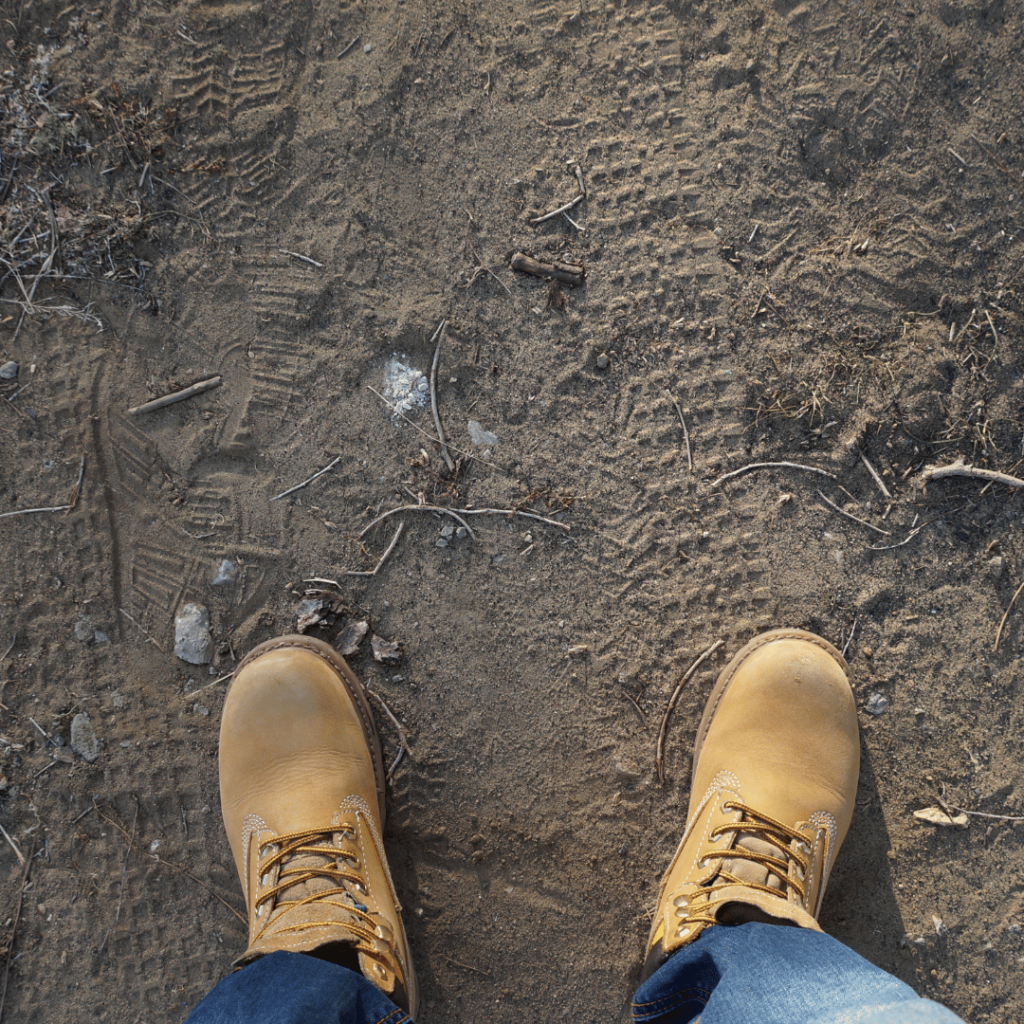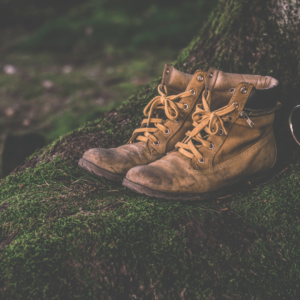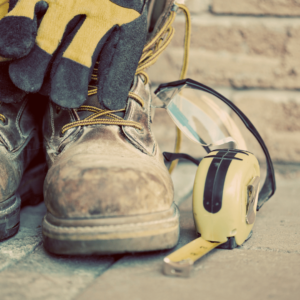Choosing the best work boots for different trades isn’t just about comfort. For those of us in construction, hospitality or on festival sites, the right footwear keeps us safe and ready for anything the job throws our way. With so many options out there, finding boots that match the demands of your trade can feel overwhelming.
We’ve seen how the right gear, from lightweight workwear to sturdy boots, makes a real difference for teams across Australia. In this guide, we’ll break down what to look for in work boots, tailored to the needs of various industries. Whether you’re on a building site, in a restaurant or working outdoors, the right choice starts with understanding your trade’s unique demands.
Key Takeaways
- Choosing the right work boots for your trade is essential for both safety and comfort, with features varying according to industry demands such as construction, hospitality, mining, and light industry.
- Prioritise key features like safety toe types, slip resistance, durability, and compliance with Australian standards (including AS/NZS 4602.1:2024) to ensure maximum protection and support at work.
- Options are available for specific requirements, including lightweight, non-conductive, and waterproof boots, as well as tailored fits for women’s workwear needs.
- Regular care like cleaning, drying, conditioning, and inspection significantly extends the lifespan and effectiveness of your work boots, helping to maintain safety and compliance on site.
- Rotating between pairs and replacing worn boots promptly prevents injury and maximises comfort, ensuring ongoing workplace productivity.
Overview Of The Best Work Boots For Different Trades
Best work boots for different trades meet tough workplace needs, factoring in essential comfort, safety features and compliance with Australian standards. Workwear for tradies, event staff, and corporate teams needs boots engineered for daily reliability and specific challenges like heavy lifting or sharp environments.
- Construction and Trade Industries
Top construction boots prioritise steel toe caps, oil-resistant soles, and waterproofing. For heavy worksites, reflective shoes and durable materials improve visibility and minimise risk. AS/NZS 4602.1:2024 compliant gear supports jobsite regulations and safety.
- Hospitality and Retail
Flexible, slip-resistant boots dominate hospitality, where long shifts and slick floors pose daily hazards. Lightweight styles suit fast-paced restaurant staff, while custom uniforms, which can feature embroidered workwear or logo printing, enhance professionalism.
- Outdoor and Mining Sectors
Reflective workwear for mining goes with boots that guard against impact and extreme conditions. High ankle support and breathable linings help when standing or walking for extended periods. High visibility jackets complete the required hi vis workwear Australia demands for outdoor safety.
- Women’s Fit and Comfort
Women’s workwear Australia includes boots designed for smaller foot shapes and added arch support. Lightweight yet tough materials aid movement, and safety workwear online platforms offer a range of tailored fits.
- Light Industry and Maintenance
Slip-on or lace-up boots with antistatic soles benefit maintenance teams and sheet metal workers. Easy cleaning and resistance to acid spills or abrasives extend workwear life.
| Trade | Key Features | Compliance |
| Construction & Trades | Steel toe caps, oil-resistant, waterproof, reflective | AS/NZS 4602.1:2024 |
| Hospitality & Retail | Slip resistance, lightweight, comfortable for long wear | Industry-specific safety standards |
| Mining & Outdoor | High visibility, heavy-duty, impact protection | Hi vis clothing standards Australia |
| Women’s Workwear | Tailored fit, arch support, lightweight options | AS/NZS-compliant models |
| Light Industry & Maintenance | Antistatic, easy-cleaning, abrasion resistance | Dependent on work environment |
Durable workwear for construction and other sectors supports safe and productive trades. When pairing boots with logo printing, screen printing services or custom embroidered uniforms, teams present a unified and professional image both in the workshop and in the field. Understanding workwear trends 2025 can also shape choices as new boot technologies emerge, improving comfort and job safety for all staff.
Key Features To Consider In Work Boots
Selecting work boots demands attention to critical features that align with industry safety requirements and daily comfort. We see frequent trade-offs between safety, support, and longevity, with each sector like construction or hospitality presenting its own top priorities. Here’s what to look for in the best work boots Australia offers, especially when sourcing for durable workwear for construction or reviewing hi vis workwear Australia standards.
Safety Toe Types
Safety toe types dictate much of a boot’s protection level. Metal options like steel toe caps absorb heavy impacts—popular in workwear for tradies in construction and mining. Composite toes use materials such as fibreglass or plastic, reducing weight and avoiding conductivity, perfect for electricians. Aluminium toes offer lighter protection and balance, suitable for light industrial settings. Each safety toe must comply with AS/NZS 4602.1:2024 compliant gear criteria if it is to meet Australian hi vis clothing standards.
Comfort And Support
Comfort and support in work boots affect long-wear usability. Padded insoles cushion each step, while ergonomic arch support benefits those in hospitality or retail roles where hours are long. Breathability from mesh panels or moisture-wicking linings reduces sweat, important in warmer climates and for women’s workwear Australia styles. Lightweight outsoles and shock absorption also matter for workers who stand, walk, or climb throughout the day.
Durability And Materials
Durability and materials ensure boots hold up under daily use in workwear for tradies or mining. Full-grain leather uppers resist abrasions, water ingress, and corrosive substances found on-site. Reinforced stitching and oil-resistant soles extend longevity. Ripstop fabrics add a lightweight, tear-resistant advantage to some hi vis workwear Australia options for tough environments. We find that boots combining leather, high-grade synthetics, and robust fasteners, deliver superior wear resistance.
| Feature | Recommended Material | Industry Application | AS/NZS Compliance |
| Safety Toe | Steel, Composite, Aluminium | Construction, Mining, Electrical | Yes |
| Comfort/Support | Padded Insole, Arch Support | Hospitality, Retail, Light Trade | Optional |
| Durability/Materials | Leather, Ripstop, Rubber | Construction, Mining, Outdoor | Yes |
If considering safety, comfort, and material quality, work boots become a long-term asset, not just a requirement, across any sector that values safety workwear online and new workwear trends 2025.
Top Work Boots Recommendations By Trade
Selecting the best work boots by trade means looking at task demands, safety, and daily comfort. We cover leading options for different industries, considering compliance and durability for Australian standards.
Construction Workers
Steel toe work boots deliver solid toe protection, high slip-resistance, and sturdy grip for construction. Key features include reinforced midsoles, puncture-resistant outsoles, and water-resistant uppers suited to sites with heavy tools and machinery. Many boots comply with AS/NZS 4602.1:2024 clothing standards for safety. Popular models support both men and women’s workwear Australia needs, with wider fits and additional ankle support. Options with high visibility outsoles help when working in low-light or outdoor environments. Durable workwear for construction benefits from boots built with full-grain leather and ripstop fabrics to handle site abrasions.
Electricians
Non-conductive work boots reduce the risk of electric shock in electrical trades. Composite or aluminium safety toes, rather than steel, prevent conduction of electricity. Oil and slip-resistant soles reduce hazards from slick flooring. Lightweight boots enable mobility in confined spaces. Several models meet AS/NZS 2210.3 safety certifications. Features like antistatic inserts and ergonomic support help during long shifts.
Plumbers
Waterproofing, flex points and slip-resistant soles set the best work boots for plumbers apart. Waterproof membranes and durable outsoles withstand wet sites, spills, and uneven floors. Boots with kick-off lugs help remove muddy footwear hands-free. Look for antimicrobial linings to fight odour during extended jobs. Easy clean finishes support ongoing workwear maintenance.
Warehouse Workers
Lightweight, breathable work boots keep warehouse teams comfortable through shifts. Cushioned footbeds with shock absorption reduce stress from standing and walking on concrete. Safety toe options meet job site requirements—steel for heavy stock, composite for regular lifting. Slip-resistant outsoles limit accidents from oily or dusty floors. Flexible designs allow natural foot movement, helping prevent foot fatigue.
Landscapers And Outdoor Workers
Waterproof boots with reinforced toe caps and deep tread make sense for landscapers. Heavy-duty traction handles loose soil, gravel, and rain. Breathable linings manage sweat during outdoor work. For high visibility and safety, choose hi vis workwear Australia boots with reflective panels. Scuff guards and ripstop textiles increase lifespan despite harsh weather and terrain. Brands often offer sizes for various foot shapes, supporting workwear for tradies and tailored fit for women’s workwear Australia choices.
Care And Maintenance Tips For Work Boots
Proper care extends the life and safety of the best work boots Australia offers. We keep boots performance-ready for site workwear for tradies if we stick with simple routines and regular checks.
Cleaning Work Boots
Maintaining cleanliness prevents material damage and odour buildup. Brush off loose dirt after shifts using a soft brush. Wipe stains or mud with a damp cloth, not soaking leather or fabric. For persistent grime, use a specialised cleaner suitable for the material—leather or synthetic—and allow boots to air dry away from heat sources. Regular cleaning helps preserve the engineered strength found in durable workwear for construction and hi vis workwear Australia.
Drying Techniques
Rapid or improper drying degrades materials and weakens adhesives. We remove insoles and laces, letting every part air dry separately in a ventilated space. Avoid placing boots near heaters, direct sunlight, or in tumble dryers. Drying properly ensures compliance with workwear maintenance tips and keeps boots ready for unpredictable conditions in reflective workwear for mining or high visibility jackets.
Conditioning and Protection
Conditioning prevents leather cracking and keeps boots water-repellent. We apply a leather conditioner or wax once every three to four weeks, focusing on seams and high-flex points. For boots used outdoors or in mining sites, add a waterproofing spray after each clean, if required. These measures meet the daily performance needs of workwear for tradies and support long-term comfort.
Inspection and Basic Repairs
Regular inspections reduce accident risks. We check for split seams, worn tread, frayed laces, and damaged eyelets weekly. If minor issues appear—such as loose soles or minor tears—we repair them using certified adhesives or patches. For major damage, we replace the boots entirely to maintain compliance with Australian safety standards and AS/NZS 4602.1:2024 compliant gear requirements.
Storage Guidelines
Correct storage maintains work boot structure. We store boots in cool, dry spots with enough airflow. Boot shapers or rolled newspapers help retain shape. Short-term storage near damp areas leads to mould and weakens materials, so we always dry them before storing.
Rotating and Replacing Boots
Rotating between two pairs lowers wear and extends each pair’s lifespan. We replace boots at the first signs of compromised support, destroyed outsoles, or loss of water-resistance, especially for those needing high durability in demanding trades or for those using safety workwear online to restock gear.
| Care Step | Key Action | Frequency |
| Cleaning | Brush, wipe, air dry | After each use |
| Drying | Remove parts, air dry | When wet |
| Conditioning | Apply conditioner/wax | Every 3–4 weeks |
| Inspection/Repair | Check/repair, replace | Weekly/as needed |
| Storage | Dry, ventilated area | Always |
| Rotation/Replacement | Alternate, upgrade boots | Ongoing |
Consistent care preserves best work boots Australia markets and aligns with recommended workwear maintenance tips. Clean, inspected boots support safe, productive shifts and extend the value of investments in quality site footwear.
Conclusion
Choosing the right work boots isn’t just about ticking boxes for safety or comfort, it’s about investing in our well-being and productivity every day. When we match our footwear to the demands of our trade and take the time to care for it properly we’re setting ourselves up for long-term success on the job.
Let’s remember that quality gear pays off in performance and peace of mind. With the right boots on our feet we can tackle any task with confidence and stay ready for whatever the workday brings.
Frequently Asked Questions
What are the most important features to look for in work boots?
When choosing work boots, prioritise safety toe protection, comfort, and durability. Look for options tailored to your trade, such as steel toe caps for construction, slip-resistant soles for hospitality, and waterproof materials for outdoor work. Ensure the boots comply with Australian safety standards.
Are steel toe boots necessary for all trades?
No, steel toe boots are not required for all trades. They are crucial in construction and heavy industry for protection against impact. Other trades, like electricians, may prefer composite or non-metallic toes for electrical safety, while retail and hospitality workers may focus on comfort and slip resistance.
How do I choose the right work boots for my trade?
Consider your daily tasks and potential hazards. Construction and trades often need protective toe caps and waterproofing. Hospitality and retail benefit from flexible, slip-resistant soles. Outdoor workers should look for reinforced protection and water resistance. Always check if the boots meet your industry’s safety standards.
What are the differences between steel, composite, and aluminium safety toes?
Steel toes offer maximum protection and durability but can be heavy. Composite safety toes are lighter and non-conductive, ideal for electricians or anyone working around electricity. Aluminium toes are lightweight and protect well but may conduct cold and heat more than other materials.
Are there work boots specifically designed for women?
Yes, many brands offer work boots designed for women’s foot shapes. These boots usually feature smaller sizes, narrower fits, and enhanced arch support, ensuring better comfort and safety for women in various industries.
How often should I replace my work boots?
Replace your work boots when you notice significant wear, loss of support, or compromised safety features. This usually occurs every 12–24 months, but it depends on usage, conditions, and care. Regular inspections will help determine when replacement is necessary.
How can I extend the life of my work boots?
Keep boots clean and dry, condition leather regularly, and store them in a cool, dry place. Rotate your boots if possible and inspect them frequently for wear or damage. Promptly address any issues to maximise safety and durability.
What should I do to care for my work boots properly?
Clean off dirt and debris after each use. Dry boots naturally—avoid direct heat sources. Condition leather boots as recommended, check for damage or worn parts, and store them in a ventilated area. Regular care preserves both performance and longevity.
Are slip-on or lace-up boots better for light industry and maintenance?
Both styles can be suitable; the choice depends on personal preference and job requirements. Slip-on boots are convenient for quick removal, while lace-up options offer more adjustable support. Ensure the boots provide antistatic properties and adequate slip resistance for safety.
Can work boots be customised for professionalism?
Yes, many suppliers offer options to customise work boots with your company’s branding or colours. Customisation can enhance professionalism, foster team spirit, and provide a unified workplace appearance. Always check that any customised boots still meet industry safety standards.



